+86-0523-83274900
+86-151 9064 3365
The Locking Two-Way Fire Hose Distributor is a professional firefighting equipment, and its main function is to reasonably divert water sources in firefighting operations. Firefighting operations, especially in large-scale fires, high-rise building fires or forest fires, often require multiple firefighters to work at the same time, and a single water source cannot meet the needs of spraying water to multiple points at the same time. At this time, it is necessary to scientifically distribute the water flow to ensure that multiple fire extinguishing points obtain stable water pressure and water volume at the same time.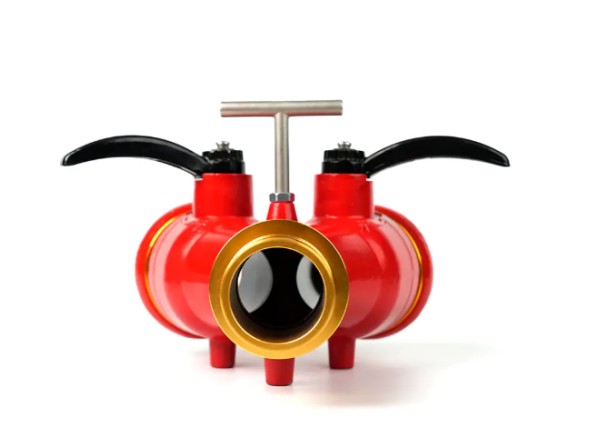
The core function of the distributor is to distribute a stream of water from a water pump, fire truck or municipal water supply network into two independent streams. These two streams are transported to different fire hoses through the two outlets of the distributor, thereby achieving the goal of "one source, multiple routes of water supply". Each hose can be operated independently by different firefighters or firefighting teams to achieve multi-point simultaneous spraying, improve firefighting efficiency and response speed.
In actual use, the locked two-way distributor is usually installed in the middle section or key node position of the fire hose system to connect the water source and multiple hoses. It is an important intermediary connecting upstream and downstream equipment, ensuring efficient transmission of water flow, uninterrupted, and flexible scheduling.
In addition, the distributor also has a lock-type anti-misoperation design. Firefighting sites are often noisy and tense, and ordinary valves are easily touched by mistake, causing water flow interruption or even accidents. The lock structure ensures that the valve can only be operated after manual unlocking, preventing accidental closure or opening, and improving the reliability and safety of the system.
Two-way distribution function: core water distribution capabilities to meet multi-point combat needs
The core function of the locked two-way fire hose distributor lies in its efficient and scientific water distribution design. The equipment can reasonably distribute one high-pressure main water flow into two stable and independent water flows, supplying two fire hoses in different directions or tasks respectively. This two-way output mode greatly enhances the flexibility and tactical scalability of the water supply system, enabling firefighting operations to achieve "multi-line parallel" while taking into account the firefighting tasks of multiple fire points.
Especially in large-scale, multi-point fire scenes such as high-rise buildings or forests, traditional single-line water supply methods often have problems such as slow response speed and insufficient coverage. The two-way distributor can form a multi-point water curtain in the first time, quickly complete the synchronous advancement of peripheral blocking and core area fire extinguishing, and significantly improve the efficiency and effect of fire extinguishing.
Lock-type anti-misoperation design: Strengthen operational safety and system stability
The fire scene environment is harsh, the operating pressure of personnel is high, and the risk of misoperation always exists. Once the valve is opened or closed in an unexpected state, it may cause a sudden interruption of water supply, a sudden change in water pressure, and even cause the firefighting process to be forced to be interrupted, endangering the safety of on-site personnel.
For this reason, the distributor is equipped with a special lock-type anti-misoperation device. This structure ensures that the valve cannot be moved at will without clear unlocking through physical locking, preventing abnormal water flow due to unexpected situations such as vibration, impact, and mistouch. After the operator completes the adjustment, it can be quickly locked to ensure the continuity of water flow, pressure stability, and reliable execution of the entire firefighting process. This design has important practical value in high-pressure and high-speed combat scenarios and is one of the key configurations to ensure the safe operation of the firefighting system.
Independent control valve: precise flow adjustment for strategic fire extinguishing
In order to meet the ever-changing needs of complex fire scenes, each water outlet is equipped with an independent valve control unit. Firefighters can flexibly adjust the water output and water pressure of each hose according to the specific situation of the fire to form a hierarchical and zoned water supply strategy.
For example, in areas with fierce fires and complex burning materials, large-flow high-pressure water can be provided through fully open valves to concentrate superior forces to quickly extinguish the main fire source. In the outer warning area or edge cooling area, the water flow can be moderately reduced to prevent re-ignition or expand the control line. This "differentiated water supply" mode not only optimizes resource allocation, but also improves fire extinguishing efficiency, reduces water waste, and provides stronger operational adaptability for dealing with diverse fire scenes.
Widely applicable environment: high-strength design to cope with multiple extreme challenges
The lockable two-way fire hose distributor fully considers various harsh practical application environments at the beginning of its design. The product is made of corrosion-resistant and pressure-resistant materials such as high-strength aluminum alloy and stainless steel. It has good weather resistance and mechanical stability and can work normally under extreme climatic conditions such as scorching sun, high cold frost, humid rain forest, and dust.
At the same time, the equipment is suitable for high-pressure water systems in high-rise buildings, wild forest fires, chemical plant areas with limited water resources, and flammable and explosive oil field platforms. It is a professional equipment that takes into account "tactical diversity" and "environmental diversity", which can provide solid logistical support and efficient support for front-line firefighting teams.
Safe and reliable, easy to operate: optimized design helps rapid deployment
Modern firefighting and rescue emphasizes "speed first", and the response speed and convenience of equipment directly determine the efficiency of tactical deployment. The overall structure of the distributor is compact, the layout is reasonable, and the weight control is moderate, which is convenient for single-person rapid transportation and deployment. The interface is standardized, supports quick clamps or threaded connections, and on-site installation does not require cumbersome tools and can be arranged in a few minutes.
At the same time, all operating parts integrate ergonomic design, comfortable feel and reasonable mechanics. Even if firefighters wear heavy gloves, they can easily complete operations such as connection, switching, and locking. The overall design focuses on practical application experience, providing a more friendly and efficient operation basis for high-pressure, high-temperature, and high-speed emergency combat environments.
Improve water source utilization efficiency: energy saving and efficiency improvement, reduce system burden
In the face of large-scale fires, the acquisition and use efficiency of water resources have become key factors for successful firefighting. By reasonably diverting the main water source, the distributor can supply water on demand according to the actual number and distribution of fire extinguishing points on site to maximize resource utilization.
In the long-distance water supply scenario with tight water sources, the distributor avoids the pressure loss and waste caused by long-distance water delivery of a single-tube hose, shortens the path, and improves the coverage efficiency; in multi-point fire source fighting, multiple hoses can be output at the same time to achieve a larger fire extinguishing coverage. The equipment effectively alleviates the scheduling pressure of the traditional water supply system, provides reliable support for on-site energy saving and efficiency improvement, and reflects the development trend of "fine, systematic, and intelligent" modern firefighting equipment.
Advantages of the lock-type two-way fire hose distributor:
Realize multi-channel water supply at the same time and improve fire fighting efficiency
In complex fire situations such as high-rise buildings or forest fires, the fire often spreads rapidly in multiple points and directions, and the traditional single-channel water supply method is difficult to cover all burning areas in time. With its core multi-directional distribution capability, the lock-type two-way fire hose distributor can accurately and efficiently divide a main water source into two or more independent water flows, supporting multiple hoses to operate simultaneously. This "multi-channel parallel" water supply solution enables firefighters to quickly surround and extinguish multiple fire sources, effectively suppressing the spread of fire. Especially in the initial control stage, the rapid formation of a large area of water curtain coverage is crucial to strive for the "golden time" of fire fighting, greatly improving the overall fire fighting efficiency and the success rate of fire fighting.
Anti-mislocking device, safe and reliable
Fire scenes are often accompanied by complex situations such as smoke, heat waves, noise, and dense crowds. During operation, due to accidental touch or confusion, it is very easy to cause the valve to be opened or closed by mistake, resulting in water supply interruption or water pressure imbalance, thereby affecting the progress of fire fighting and even causing passiveness in combat. The locking two-way distributor is specially designed with a safety locking mechanism to prevent misoperation and ensure that the valve will not be opened or closed at will without authorization or accident. The device achieves physical blocking through a mechanical locking structure, effectively improving the safety level of equipment operation. When firefighters work under extreme conditions, they do not have to worry about the water source getting out of control due to collisions, heavy objects squeezing, etc., making the entire water supply system more stable and reliable, ensuring the continuity and safety of firefighting tasks.
Independent valves flexibly adjust water flow
Facing the complex needs of different fire conditions, unified water supply often causes resource waste or insufficient local water pressure. Each water outlet of the distributor is equipped with an independent regulating valve, and the operator can flexibly adjust the flow and pressure of each water hose to achieve more accurate fire extinguishing control. For example, when facing the main fire source head-on, the high flow mode can be turned on, and a water curtain cooling or anti-reignition zone can be set up at the rear to reduce water pressure supply and save precious water resources. This subdivision adjustment capability makes the fire extinguishing strategy more targeted and hierarchical, meeting the dual requirements of "precise fire extinguishing" and "efficient dispatching" of modern fire protection systems.
Compact structure, easy to carry and install
The fire situation changes rapidly, which puts high demands on the convenient deployment capability of the equipment. The lockable two-way fire hose dispenser adopts a modular and compact design. The whole machine is small in size and the weight is evenly distributed, so it can be easily and quickly carried by one person. Whether it is quickly going up and down stairs in a high-rise building or crossing a rugged path in a forest terrain, the equipment can be installed and docked in a few minutes. Its standard interface design supports the rapid connection of the hose to the trunk network, effectively shortens the pre-war preparation time, improves the on-site response speed, and wins a critical time window for firefighting.
Adapt to complex environments, strong and durable
The body of the dispenser is made of high-quality aluminum alloy or stainless steel, with excellent pressure resistance, impact resistance and corrosion resistance. It can not only cope with the operation of high-pressure water supply systems in high-rise buildings, but also withstand extreme natural environments such as wind and sun, sediment erosion, and temperature changes in the wild. Its seals are made of high-strength wear-resistant rubber or fluororubber to ensure that it still has good sealing and flexibility after long-term use, and is not easy to age, crack or fail. These features not only extend the service life of the equipment, but also reduce the maintenance frequency and replacement cost. It is a reliable professional equipment under severe fire conditions.
Optimize water source utilization and improve fire extinguishing coverage
In many fire extinguishing scenarios, water resources are limited and precious. Through the scientifically designed distribution pipeline and valve control system, the equipment can efficiently distribute water from the same main water source to multiple combat areas. It avoids the situation where a certain water hose is wasted due to excessive water volume, or the water supply in other areas is affected by concentrated water pressure. This precise distribution mechanism allows every drop of water to be used where it is most needed, which not only improves the fire extinguishing capacity of the unit water source, but also greatly expands the fire extinguishing coverage rate, which helps to control the fire spread boundary faster.
Easy to command and manage
In large fire scenes such as high-rise building fires or forest group fires, there are many fire hoses with complex directions, which can easily lead to management confusion and scheduling errors. The lock-type two-way distributor provides a clear and controllable "water supply node" for on-site commanders. By centrally managing the flow of each outlet, zoning scheduling and on-demand diversion can be achieved. Commanders can quickly judge and adjust the direction and intensity of water flow according to the fire situation on site, optimize resource allocation, and improve on-site collaborative combat capabilities. This equipment is not only a physical tool for water supply and distribution, but also a key node for achieving tactical command and orderly advancement.
Strong water supply capacity and high stability
The lock-type two-way fire hose distributor is equipped with an independent valve adjustment device, which enables firefighters to flexibly adjust the water flow of each channel according to the specific needs of different floors or fire zones. This pressure distribution balance mechanism effectively prevents the system from being over-pressured due to excessive water flow, or affecting the firefighting effect due to insufficient water flow. Through scientific and reasonable flow control, the stable operation of the water supply system is guaranteed to avoid equipment failure or interruption of firefighting operations due to pressure fluctuations.
In addition, the distributor can significantly reduce the overload risk of the single-line water supply system. Under the traditional single-channel high-pressure water supply mode, the long-distance main water hose often faces the challenge of excessive high-pressure load, which can easily lead to system instability or even rupture. The two-way distributor divides the main water flow into multiple streams, effectively disperses the pressure, avoids the overload operation of a single water hose, thereby improving the reliability and durability of the entire water supply system and ensuring continuous water supply at the fire scene.
Ability to cope with complex environments
Fires in high-rise buildings are characterized by multiple levels and difficult vertical transportation. The locked two-way fire hose distributor can be installed on key floors as a transfer station to reasonably distribute water flow, greatly reduce the return water pressure loss, and improve water supply efficiency. Firefighters can flexibly adjust the water flow on different floors according to the distribution of fires, achieve precise fire extinguishing, and ensure stable water supply on each floor.
The forest fire fighting environment is complex, the terrain is undulating, and the fire points are often scattered and changeable. Traditional single-line water supply is difficult to meet the water supply needs of multiple points at the same time. The flexible deployment advantage of the distributor is prominent, and water can be quickly distributed to water hoses in multiple directions to achieve multi-line parallel operation. This multi-point coverage greatly improves the speed and scope of fire fighting, and effectively responds to the diverse challenges of forest fires.
Improve safety
The locked two-way fire hose distributor adopts an anti-mislocking design, which effectively avoids the risk of valves being accidentally closed or opened due to accidental touch or collision at the tense and fierce firefighting site. The locking device ensures the stability of the valve state and the uninterrupted water flow, which fundamentally reduces the safety hazards caused by abnormal water supply during the firefighting process and improves the safety of firefighters' on-site operations.
At the same time, the multi-way water supply design of the distributor reduces the need for frequent disassembly and assembly of equipment. In traditional firefighting operations, repeated disassembly and assembly of water hoses not only wastes time, but also easily causes operational errors and equipment damage. Through one-time multi-way water supply, the movement and disassembly of water hoses are reduced, the deployment time is shortened, the operational complexity and risk are reduced, and firefighting work is more efficient and safe.
The lock-type two-way fire hose distributor is a professional equipment that rationally distributes a single water source into two independent water flows. It is widely used in complex environments such as high-rise buildings, forest fire fighting, chemical plants, and oil fields. To ensure its stable, safe and efficient operation on site, special attention should be paid to a series of details and operating specifications when using it.
Equipment inspection before use
First, the sealing performance and component status of the distributor should be carefully checked before each use. In particular, attention should be paid to the intact sealing ring at the interface to avoid water leakage due to aging or rupture. At the same time, the valve should ensure smooth switching, the lock structure is flexible and free of jamming, and all threads and joints should be kept clean and free of rust. These details are related to the stability of the equipment under high-pressure water supply, and any negligence may have serious consequences.
Lock device operation specifications
Secondly, special attention should be paid to the use of lock-type anti-misoperation devices. The lock is an important design to ensure the continuity of water supply and operational safety. When the operator opens or closes the distribution valve, he must ensure that the lock is in the unlocked state. After the operation is completed, it should be locked in time to prevent accidental touching of the valve during collision, dragging or emergency mobilization at the fire scene, causing abnormal water flow, pressure fluctuations, and even interruption of firefighting operations.
Hose interface matching requirements
The fire hose interface specifications must match the distributor. It is strictly forbidden to use incompatible connectors (such as mixing imperial and metric) when connecting, and it is even more forbidden to force the connection or use tools to twist it hard, otherwise it may cause the connector to loosen, the interface to be damaged, or even fall off during the water supply process. It is recommended to equip standard conversion connectors for emergency use, especially when dealing with mixed use of multiple devices.
Precautions for water flow distribution
When actually supplying water, the water flow should be reasonably distributed according to the on-site conditions. Even if the equipment has strong pressure resistance, excessive opening of a valve or complete closure of another outlet may cause water pressure imbalance and affect the stability of the entire water supply system. Therefore, the valve opening speed should be adjusted slowly and flexibly according to the needs of the fire-fighting area, which can avoid system overload and save water resources.
Protection during transportation and use
The fire scene is changing rapidly and time is tight, and the equipment is often faced with frequent transportation and deployment operations. Although the dispenser has a sturdy structure, it is still necessary to prevent severe drops, impacts or collisions, especially to protect key components such as valves, interfaces and locks. During transportation, the main body of the device should be held by hand, and the hose interface or valve components should not be pulled to avoid structural damage or loosening.
Stable placement and fixing measures
To prevent the equipment from shifting or tipping over due to the reaction force of water pressure, the dispenser should be placed on a stable and flat ground. If the site terrain is complex or the water supply pressure is high, anchors, fixed piles or counterweights can be used to increase its stability. Keeping the dispenser stable helps to clearly arrange the hose direction and avoid tripping people or interfering with the operation of other equipment.
Cleaning and maintenance after use
When it is not used in an emergency, it is also necessary to pay attention to the daily maintenance and care of the dispenser. After each use, the equipment should be cleaned with clean water, with a focus on removing the residual sand at the interface and valve, and then stored in a dry, ventilated, non-corrosive gas environment after drying. Regularly check whether key components such as seals, locks, valves, and joints are aging, rusting, or failing, and keep records of equipment use to record maintenance and use.
Environmental storage and material protection
Although the equipment itself has good corrosion resistance and high pressure resistance, it should not be exposed to the sun and rain for a long time, and should also avoid contact with oil, strong acid and strong alkali substances, etc., so as not to accelerate material aging and affect sealing performance. When the equipment is not in use, it should be properly stored to extend its service life.
Professional training requirements for operators
Finally, operators must receive professional training and be familiar with the equipment structure and operating procedures. In tense environments such as fire scenes, operating specifications and operating procedures must be strictly observed, and multiple people are prohibited from operating the same equipment at the same time to avoid misoperation or safety accidents. Unified command, clear responsibilities, and reasonable deployment are important guarantees to ensure the efficient operation of equipment and the smooth completion of firefighting tasks.
How stable is the locking two-way fire hose dispenser in extreme environments?
1. Material selection and structural design
Locked two-way fire hose dispensers usually use high-performance composite materials, such as aramid fiber, high-strength polyester fiber and engineering plastics, to improve their lightweight, wear resistance, flexibility, high temperature resistance and corrosion resistance. These materials can not only withstand high-pressure water flow, but also maintain structural integrity under extreme temperature, chemical corrosion or mechanical wear.
Aramid fiber: has extremely high tensile strength and high temperature resistance, suitable for high temperature or strong corrosion environment.
High-strength polyester fiber: provides good flexibility and tear resistance, suitable for use in complex terrain.
Engineering plastics: such as polyurethane, ABS, etc., used to manufacture housings and seals, with good weather resistance and aging resistance.
In addition, the lock-type design realizes the rapid connection and fixation of water flow through the mechanical lock structure, avoiding the loosening or leakage problems that may occur in traditional threaded connection methods under high pressure, thereby improving the overall sealing and stability.
2. Working pressure and pressure resistance
In extreme environments, fire hose dispensers need to withstand high water pressure to ensure continuous water supply in emergency situations. According to relevant test standards, qualified lock-type two-way fire hose distributors can usually withstand working pressures above 0.8 MPa, and some high-end models can even withstand 1.0 MPa or higher.
3. High and low temperature resistance
In high or low temperature environments such as forest fire fighting and chemical plants, fire hose distributors need to have good temperature resistance.
High temperature resistance: product housings and seals are usually made of high temperature resistant materials, such as polyurethane, silicone rubber, etc., which can remain stable in high temperature environments above 100°C.
Low temperature resistance: Some products also have low temperature resistance and can work normally in low temperature environments of -20°C to -30°C to prevent material embrittlement or interface freezing.
4. Corrosion resistance and chemical stability
In corrosive environments such as chemical plants and oil depots, fire hose distributors need to have good corrosion resistance to prevent damage due to chemical erosion.
Products usually use food-grade stainless steel or corrosion-resistant alloys to manufacture key components, such as valves, lock structures, etc.
Corrosion-resistant rubber, such as fluororubber and silicone rubber, is used for seals and joints to prevent seal failure caused by chemical corrosion.
5. Anti-misoperation and sealing
In extreme environments, misoperation may lead to interruption of fire extinguishing or water leakage, so the anti-misoperation function of the lock-type design is very important.
Lock structure: The mechanical lock is used to quickly connect and fix the water flow to prevent leakage due to loosening or falling off under high pressure.Sealing: The product adopts a multi-layer sealing structure to ensure that it can still maintain good sealing performance under high pressure and high temperature environment to prevent water leakage or air entry.
6. Multi-outlet independent control and stability
In scenarios where water is supplied to multiple points at the same time, such as forest fire fighting and high-rise buildings, the multi-outlet independent control function of the lock-type two-way fire hose dispenser is crucial.
Independent control valve: Each outlet is equipped with an independent control valve to achieve independent adjustment of the water flow, ensuring that the overall fire extinguishing effect will not be affected by the failure of one outlet when water is supplied to different areas at the same time.
Stability test: In actual applications, the product can maintain stable water flow distribution and pressure balance when multiple outlets are opened at the same time, avoiding equipment damage due to pressure imbalance.
7. Stability performance in actual applications
In multiple actual application cases, the lock-type two-way fire hose distributor has shown good stability and reliability:
Forest fire fighting: In high temperature, strong wind, and complex terrain, the product can work stably, ensure multi-point water supply at the same time, and improve fire fighting efficiency.
Chemical plants and oil depots: In highly corrosive environments, the product can operate stably for a long time to prevent safety accidents caused by corrosion or leakage.
High-rise buildings: In high-rise building fires, the product can quickly connect the water hose to achieve multi-point water supply, improve fire fighting efficiency and rescue capabilities.
| Project | Description |
| Material selection | Adopt high-performance composite materials, such as aramid fiber, high-strength polyester fiber, engineering plastics, etc., to improve high temperature resistance, corrosion resistance and wear resistance. |
| Structural design | Adopt lock-type structure to achieve quick connection and fixation to prevent loosening or leakage under high pressure. |
| Working pressure | Can withstand pressure above 0.8 MPa, and some models can reach above 1.0 MPa. |
| Heat resistance | Resistant to high temperature (above 100℃) and low temperature (-20℃ to -30℃) environment. |
| Anti-misoperation | Prevent misoperation through lock structure to ensure stable water flow. |
| Multi-outlet control | Each outlet is controlled independently to ensure stability when water is supplied from multiple points at the same time. |
| Practical application | Performs stable and reliable in extreme environments such as forests, chemical plants, and high-rise buildings. |
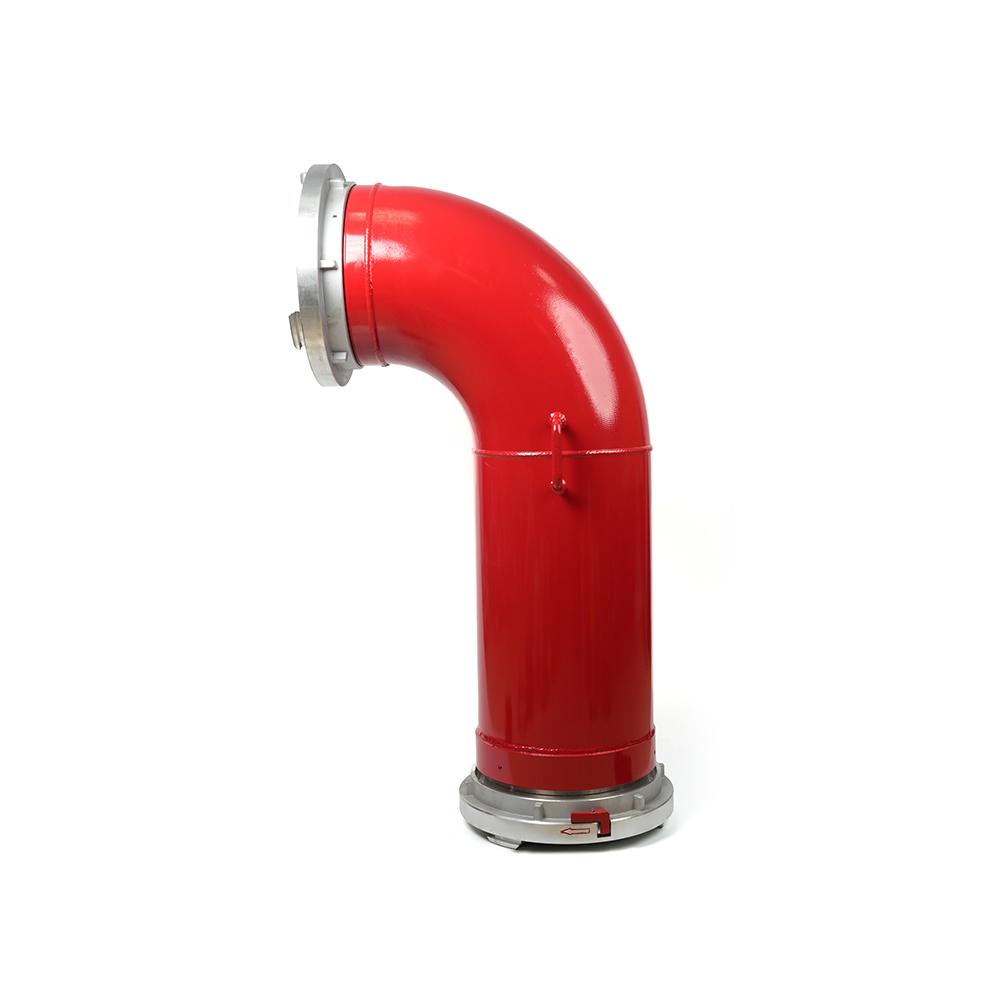 Grooved Fire Elbow-Storz
Grooved Fire Elbow-Storz
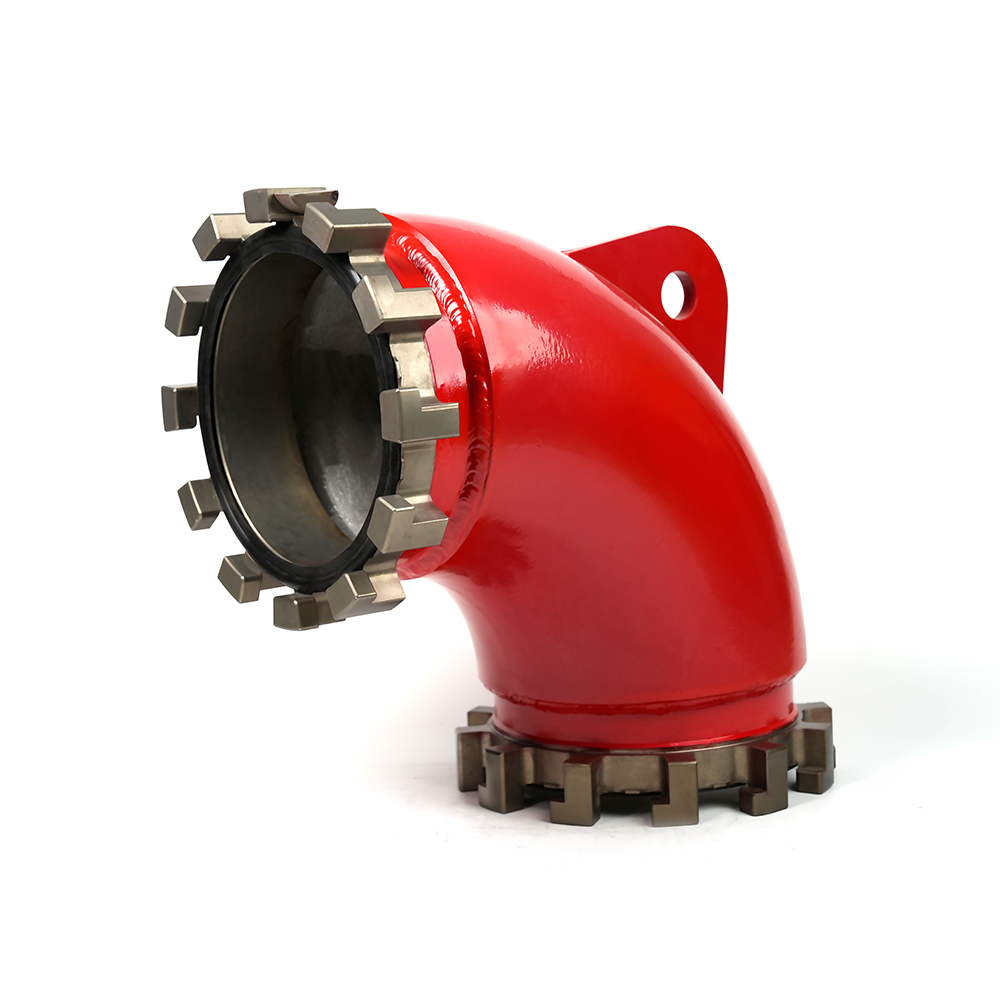 Grooved Fire Elbow-Multi-tooth
Grooved Fire Elbow-Multi-tooth
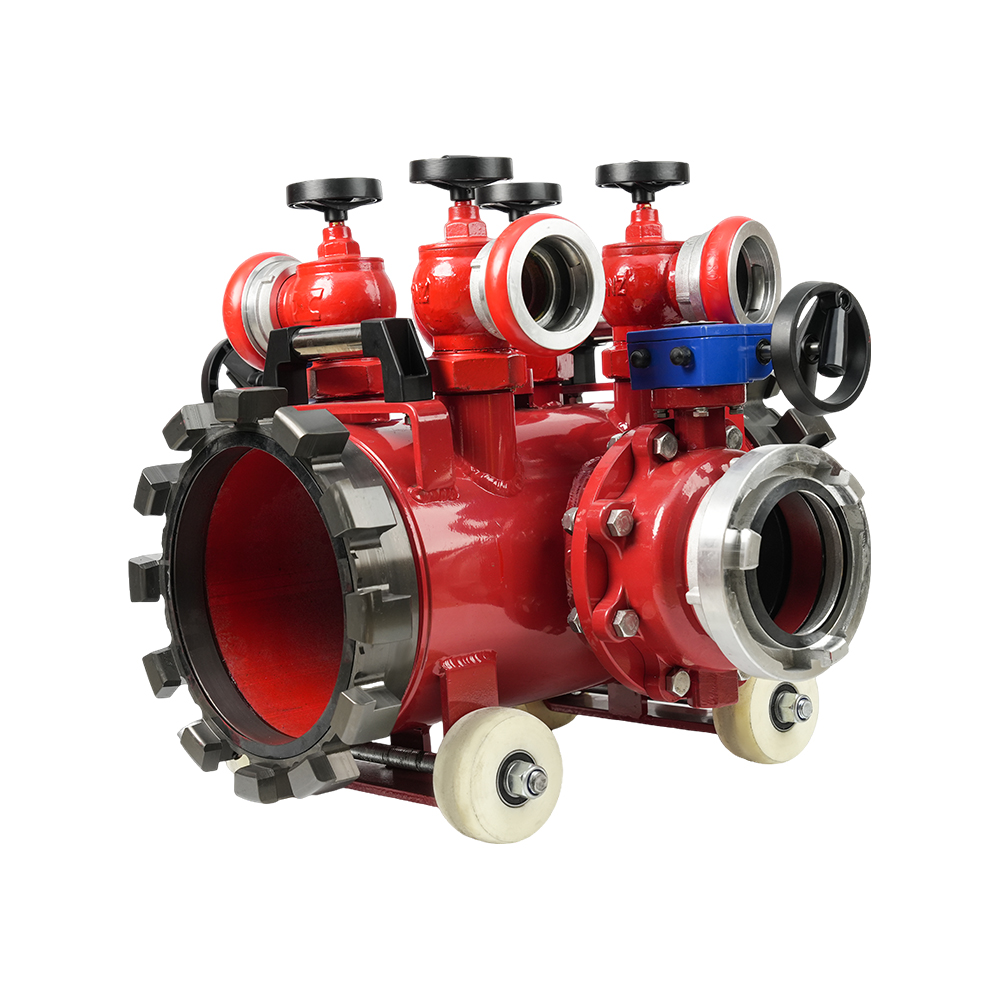 Multi-functional Fire Hose Distributor
Multi-functional Fire Hose Distributor
 Locking Four-Way Fire Hose Distributor
Locking Four-Way Fire Hose Distributor
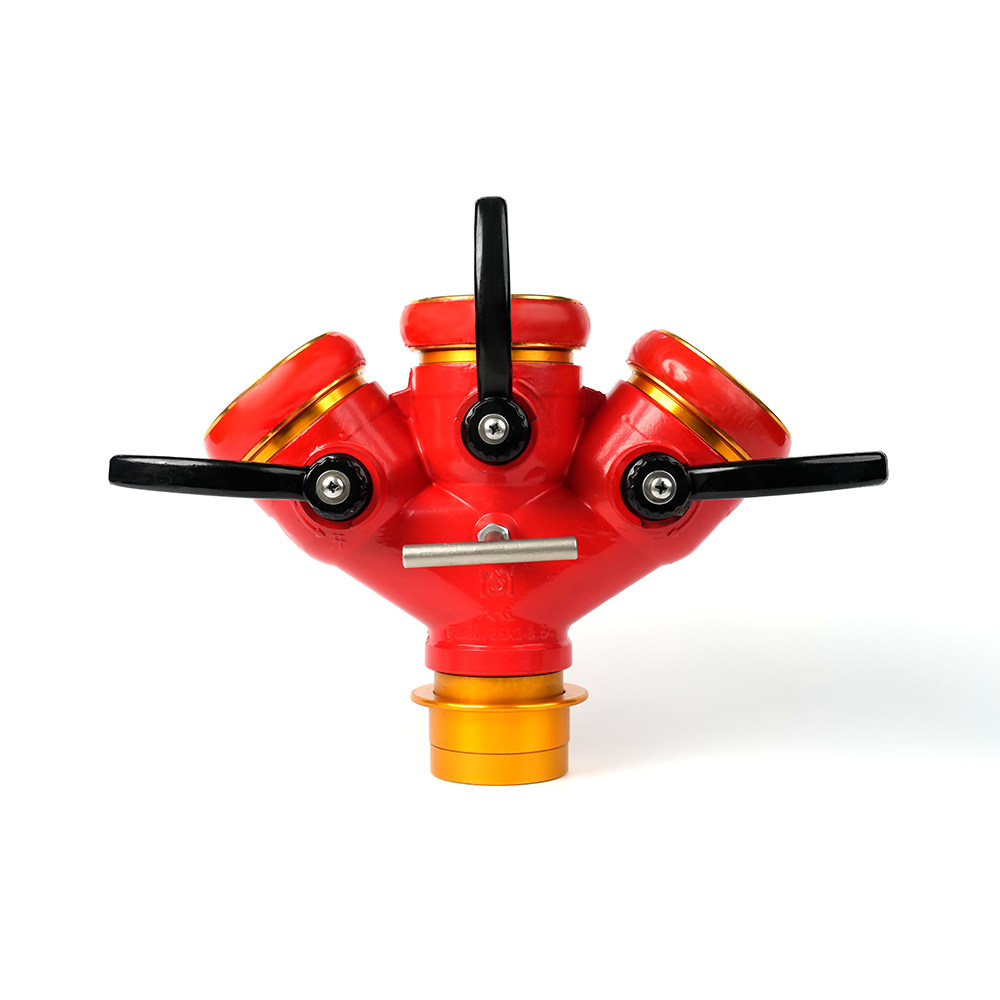 Locking Three-Way Fire Hose Distributor
Locking Three-Way Fire Hose Distributor
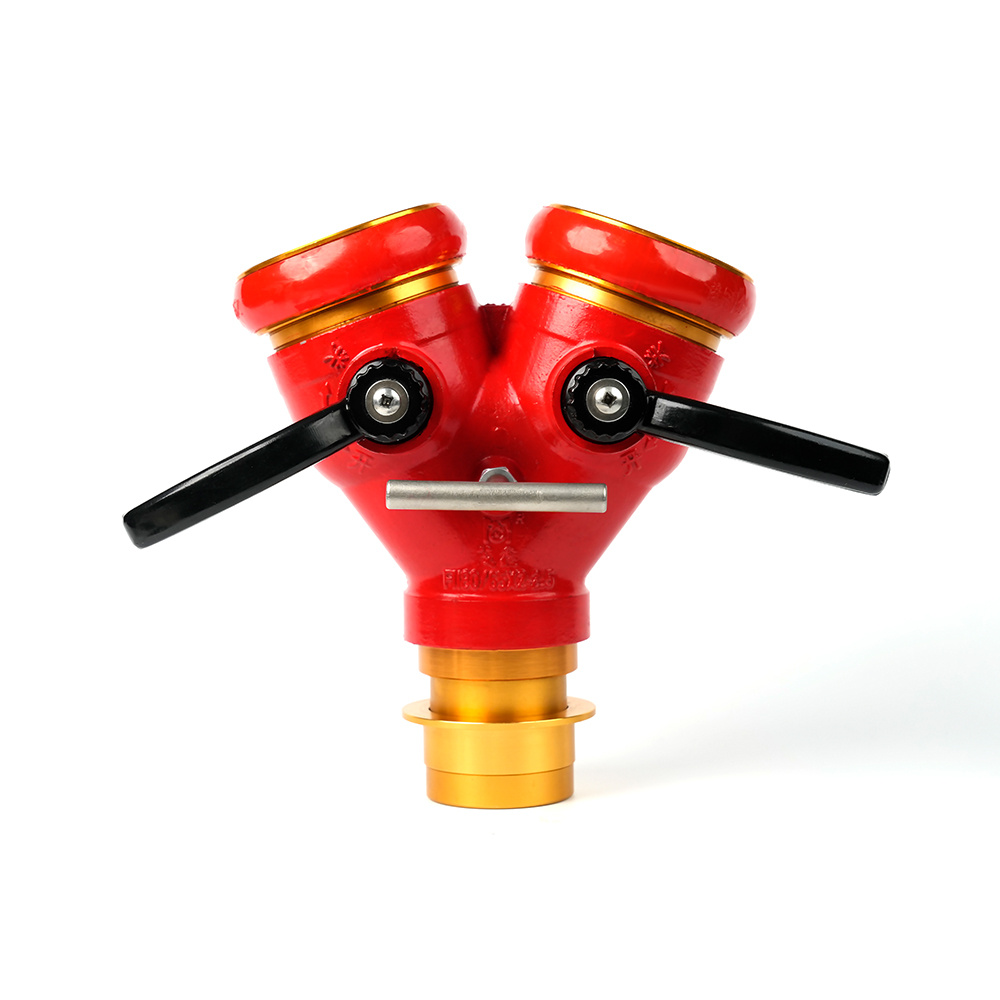 Locking Two-Way Fire Hose Distributor
Locking Two-Way Fire Hose Distributor
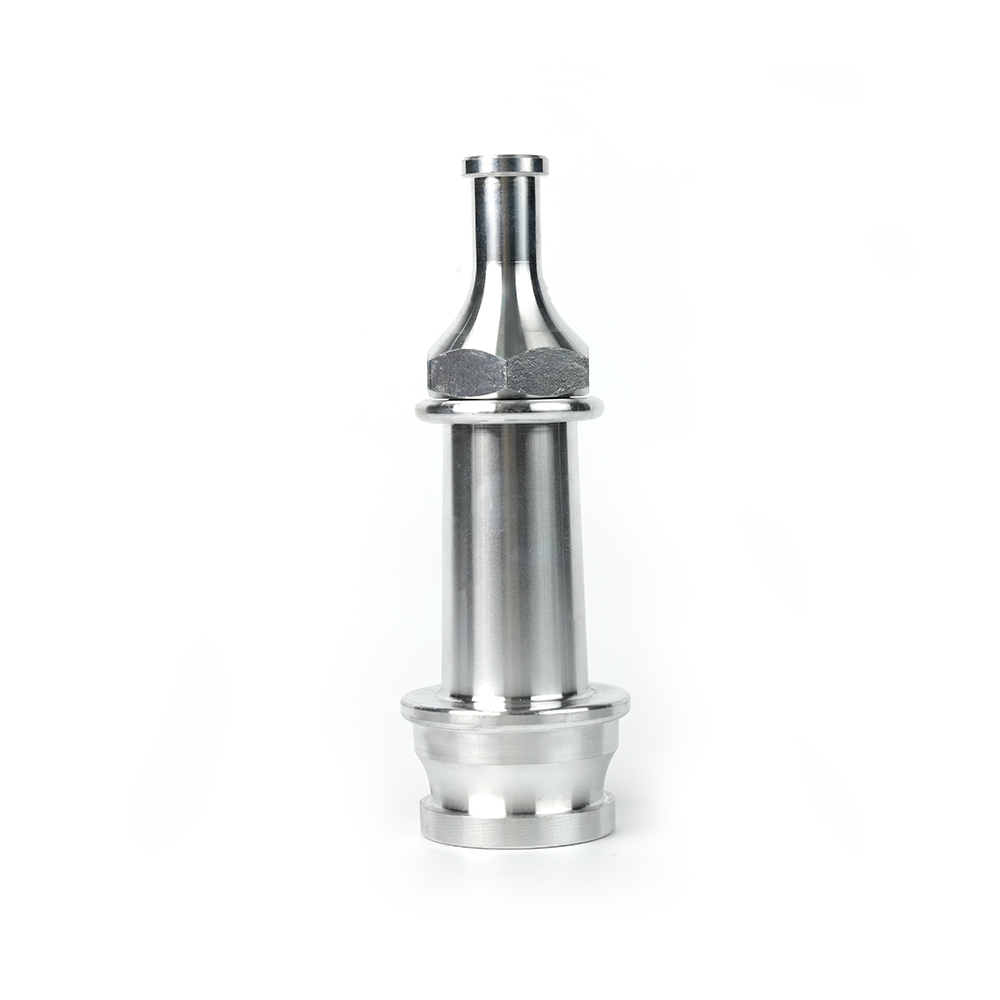 Straight Stream Nozzle
Straight Stream Nozzle
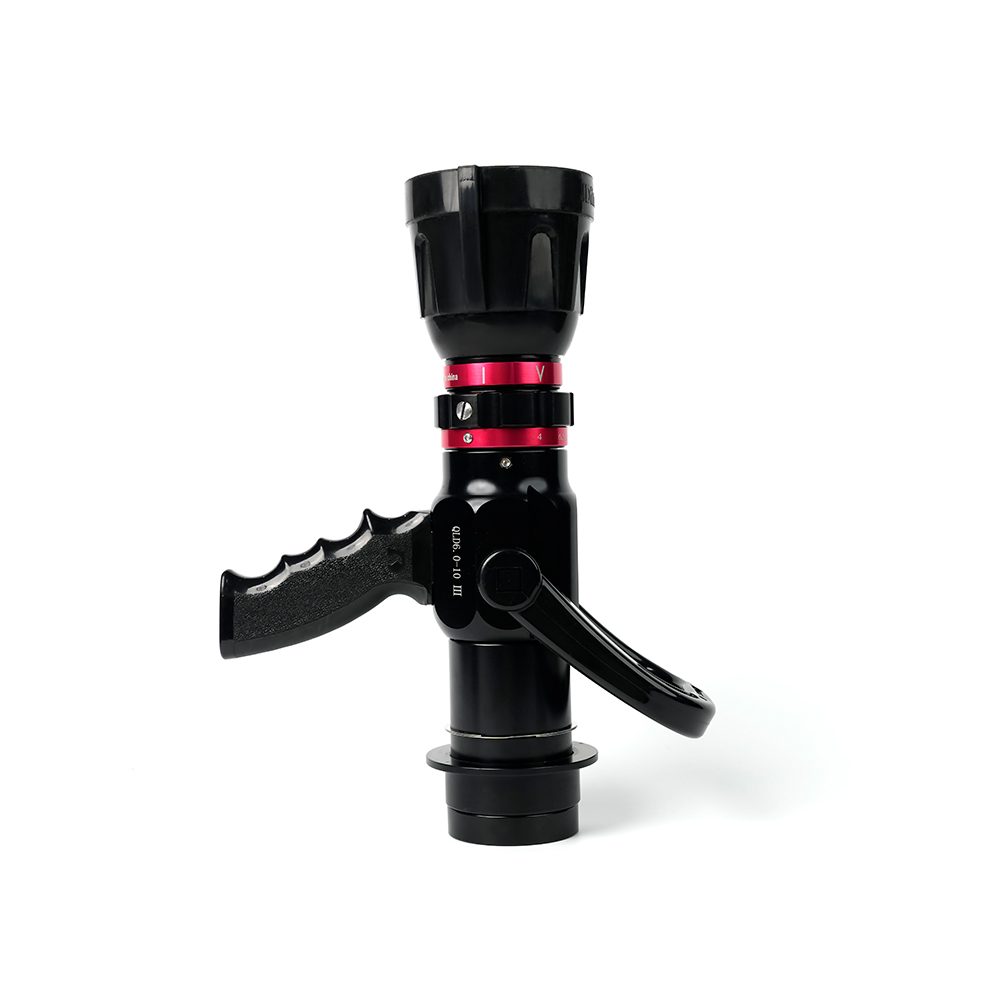 Adjustable nozzle-machino
Adjustable nozzle-machino
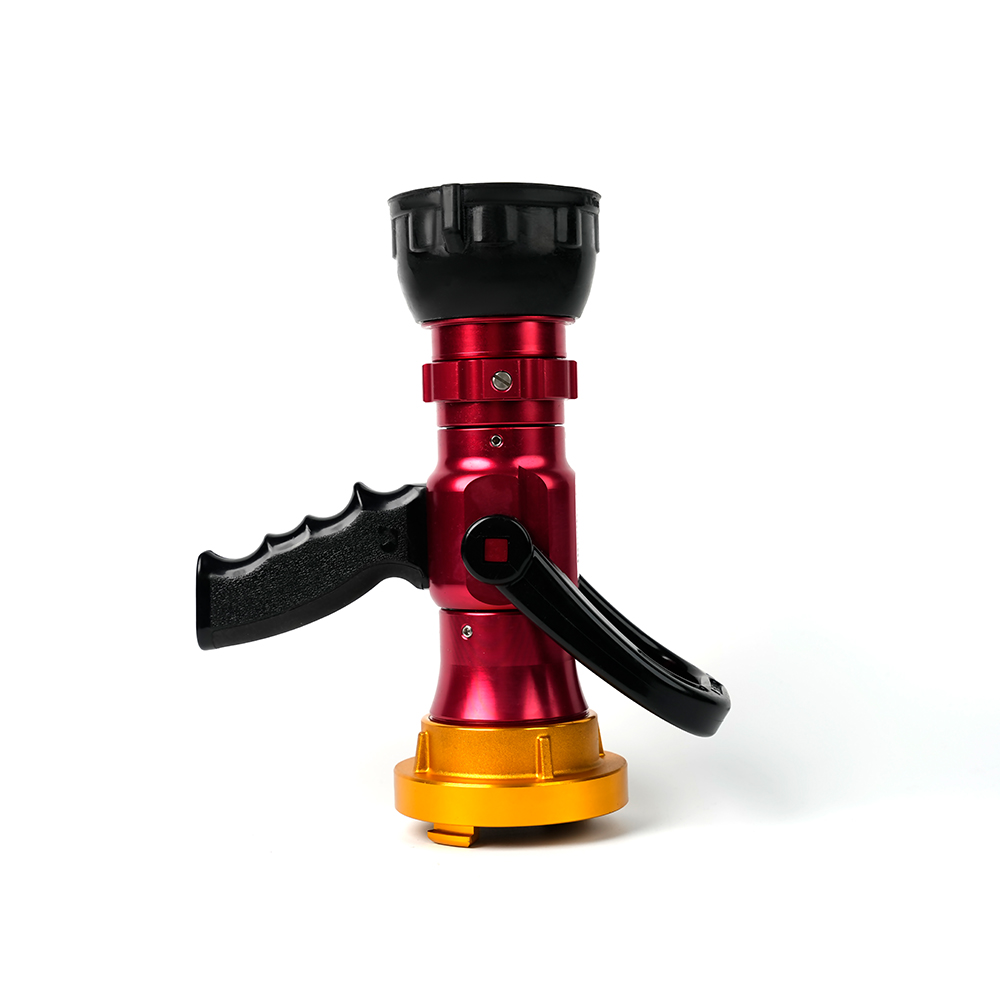 Adjustable nozzle-storz
Adjustable nozzle-storz
 Storz Adapter Couplings - Multi-Tooth
Storz Adapter Couplings - Multi-Tooth
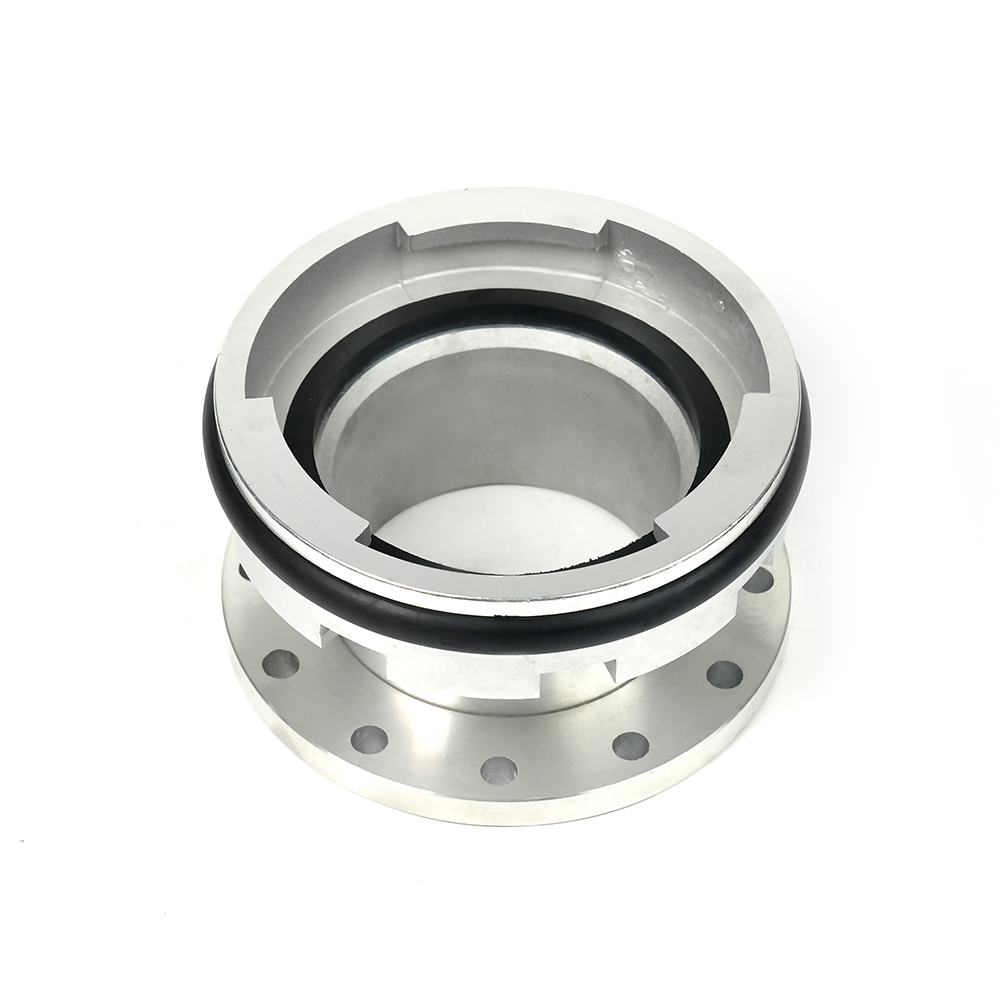 Machino Adapter Couplings – Flanged
Machino Adapter Couplings – Flanged
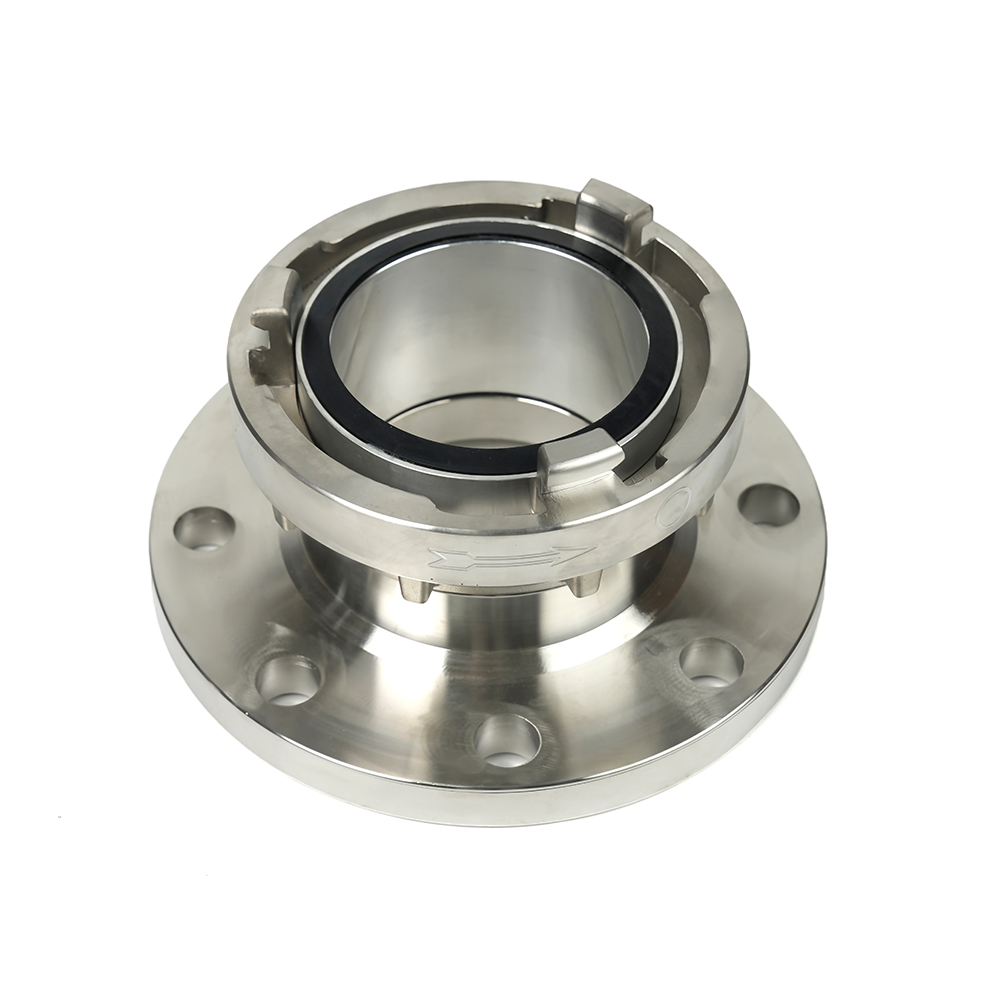 Storz Adapter Couplings – Flanged
Storz Adapter Couplings – Flanged